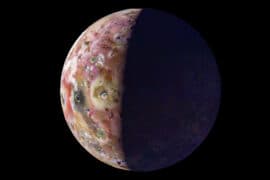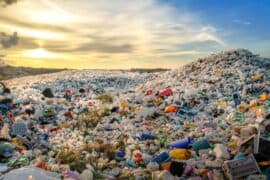
Okra can help remove microplastics from wastewater
Microplastics in wastewater come in several different sizes, colors and chemical compositions. They include fibers, fragments, pellets and flakes, and originate from the washing of textiles, cosmetic products, the decomposition of plastic packaging, deposition from the atmosphere, and from contaminated runoff. Although wastewater can be treated to remove some of the plastic particles, this involves the use of chemicals that are toxic and disadvantageous for water quality.
In a study that is to be presented at the spring meeting of the American Chemical Society (ACS) between March 20 and 24, scientists report success in using extracts from common food plants such as okra, tamarind and fenugreek, to remove suspended microplastics during the water treatment process.
Usually, microplastics are removed during water treatment using two methods. Those that float can be skimmed off the surface. The majority, however, are suspended in the water and must be treated with flocculants to make them stick together in clumps and sink to the bottom, where they can be separated from the rest of the water.
Dr. Rajani Srinivasan, principal investigator for the project, points out that some of the substances currently used to remove plastic contaminants are potentially harmful, themselves. This includes the common flocculant, polyacrylamide, which can break down into toxic components under certain conditions. “It doesn’t help if we try to clean up water but add potentially toxic substances to remove the pollutants,” said Dr. Srinivasan.
Dr. Srinivasan and her team from Tarleton State University have had some success in previous research using food-grade plant extracts as nontoxic flocculants to remove textile-based pollutants, such as dyes, from wastewater. They focused specifically on polysaccharides in the extracts because these biopolymers possess the appropriate chemical and biological properties to attract and capture pollutants like dyes or even bacteria.
“I was working with the removal of microorganisms and things like that, and I thought, ‘Why not try microplastics?’” said Dr. Srinivasan.
To investigate, the researchers tested polysaccharide extracts from fenugreek, cactus, Aloe vera, okra, tamarind and psyllium as flocculants to capture microplastics. These plants are usually eaten as foods, but they also sometimes serve as thickening agents. Okra is a potent thickener of stews and soups, and the “goo” it produces, along with slimy extracts from other plants, such as aloe, cactus and psyllium, have been shown to clean water of certain contaminants in the past.
The researchers tested compounds from the individual plants, as well as using combinations of the different extracts. They added the plant extracts to water containing microplastics and then examined the flocculated clumps microscopically. They counted the microplastics in the water before and after treatment each time, to determine how many plastic particles had stuck to the plant polysaccharides during the process.
The results showed that the polysaccharide extracts from okra, when paired with those from fenugreek, worked best to remove microplastics from seawater. The plastics in freshwater were removed most effectively using the extract from okra paired with the polysaccharides produced by tamarind plants. Overall, the plant-based polysaccharides worked as well as, or better than, the traditional flocculant polyacrylamide, depending on the combination of extracts and the water source.
Importantly, the plant-based flocculants can be implemented in existing water treatment processes, without developing additional technology. “The whole treatment method with the nontoxic materials uses the same infrastructure,” said Dr. Srinivasan. “We don’t have to build something new to incorporate these materials for water treatment purposes.”
In the next phase of the study, the researchers plan to identify the optimal ratios and combinations of plant-based flocculants to remove different microplastic types from ocean water, estuary water, freshwater and groundwater. They also plan to take their studies out of the lab and conduct practical studies in the field.
The long-term effects of ingesting these microplastics are not yet known, but it is estimated that people unintentionally consume tens of thousands of these particles every year. Their removal will undoubtedly become more and more urgent in future, and the researchers hope to commercialize their plant-based method so that microplastics can be removed from water on an industrial scale, to ensure cleaner and safer water for everyone to drink.
—
By Alison Bosman, Earth.com Staff Writer












